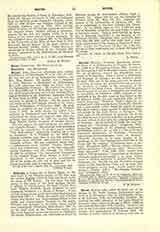

Bryant, JOHN DELAVAU, physician, poet, author, and editor, b. in Philadelphia, U.S.A., 1811; d. 1877. He was the son of an Episcopalian minister, the Rev. Wm. Bryant. His mother was a daughter of John Delavau, a shipbuilder of Philadelphia. His early education was under his father and in the Episcopalian Academy. He received the degree of A. B. in 1839, and A.M. in 1842, from the University of Pennsylvania, and entered the General Theo-logical Seminary of the Protestant Episcopal Church in New York in 1839. After one year he left the seminary to travel in Europe. On his return he was received into the Catholic Church at St. John’s Church, Philadelphia, February 12, 1842. He graduated in medicine at the University of Pennsylvania in 1848. In 1855, during the yellow fever epidemic in Portsmouth and Norfolk, Virginia, he volunteered for duty and returned only after the epidemic had subsided. In 1857, he married Miss Mary Harriet Riston, daughter of George Riston.
For two years in the early sixties he was editor of the “Catholic Herald.” His principal work, published in 1859 by subscription, is an epic poem entitled “The Redemption“, apparently inspired by a visit to Jerusalem. It is founded on the Bible and Catholic tradition, and, when it was first published, attracted some attention and received many favorable reviews. He also published, about 1852, a controversial novel entitled “Pauline Seward” which had considerable vogue at the time, especially among Catholics, and ran through ten editions. In 1855 he published “The Immaculate Conception of the Blessed Virgin Mary, Mother of God“, an exposition of the dogma recently promulgated. All of his works are now out of print and can be found practically only in reference libraries.
JOSEPH WALSH

